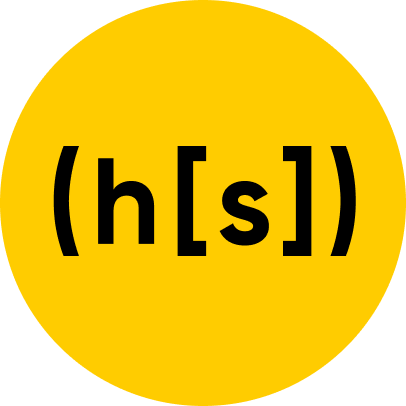Meet the Hyperscience Leadership Team

The new “Meet the Suite” series is meant to provide a closer look at the leadership and structure of Hyperscience’s teams. We want to provide a peek behind the curtain to show what it’s like working here, and how the leadership team sets the vision for where we’re headed. For our first installment we’re starting in the sales organization, spending some time with Chief Revenue Officer Chris Ranalli.
Can you tell us a little about yourself?
I was born and raised just outside of Columbus, Ohio. I come from French and Italian descent—my mother is French, my grandmother was born and raised in France, and I still have family in France. My father is 100% Italian, so it was unique growing up with parents and grandparents from two very distinct cultural backgrounds.
For college, I started at a small community college to play college baseball, and after my 2 years there I ended up going to Ohio State. So naturally, growing up outside of Columbus and then going to school there, I’ve been a huge Buckeye fan my entire life.
I’ve been married to my wife, Heather, for almost 16 years now, and we have two kids; our son Dominic, who is 15, and our daughter, London, who is 13.
As far as hobbies, I’m a huge sports guy—I coach baseball, I play golf, I love college football, and I enjoy watching major league baseball, too. Sports in general is a huge outlet for me, but I’m also a big food guy. I love everything Italian, French, and I absolutely love Mexican cuisine.
What led you to a career in sales?
I’ve been in tech since I was 20 years old, and I actually started my career as an engineer. When I was in my early 20s, I was one of those engineers that enjoyed speaking in front of others. Eventually, since I was never afraid to stand up and talk, I got recruited into sales.
Since making that change fairly early in my career, I’ve held just about every sales role under the sun. I’ve led SE teams, partner/channel teams, global sales teams—many of these roles I’ve held at some large companies. From there, moving into A CRO role was the next logical step.
What was it that drew you to Hyperscience?

I wasn’t looking for a new role at all—I was really happy in my previous position, but this opportunity kind of fell in my lap through some people I know in the venture capital world that introduced me to the team here.
Once those introductions were made, it was really the product that first caught my eye. I saw how well it works, and how much potential it has—the people that use it love it. I’m still very much an engineer at heart, so I have to believe in the product to be able to do anything from a go-to-market perspective.
If a product is garbage, it really doesn’t matter what the go to market strategy is—at the end of the day, a lousy product will always come back to bite you. So that was a key piece that I really focused on—was the product something I could believe in, something that really met a need?
The other equally important factor I took into consideration was the people. The typical sales viewpoint is “who am I going to work with externally?” but as a leader, I’m more interested in the internal. I work more for my people, and for everybody cross functionally. So to me, understanding who I’d be working with internally was very important.
I met with a ton of people during my interview process, and was amazed by the people working here—we’ve got an incredible team.
What are you most excited about?
One thing that I’m excited about is the total addressable market within the intelligent document processing (IDP) space, which Gartner says is about $5 billion. If you can scratch and claw your way to five or ten percent of that, you’re a 500 million to a billion dollar company—and that’s just the current outlook—they’re saying that it’s going to grow exponentially over the coming three to five years.
Times of economic uncertainty, a little like we’re seeing now, are often times of prosperity for our industry. It’s in these times that organizations look to increase efficiencies and cut costs, targeting primarily all those inefficient, manual processes.
One thing that sets us apart from the typical startup is that we’re well past the “get the first customer” phase. We have customers all over the world using our product, and they’re expanding their use cases, so we know what’s working and what’s not. So we’re using this knowledge to go after verticals and use cases where we’ve already deployed, and we’re looking to expand from there.
And as this market continues to grow, our total addressable market continues to grow, too. And that’s why I see what we’re doing today as just the tip of the spear. If we can get really good at what we’ve proven we can deliver on, and then expand within those verticals, things are going to explode.
So I’m really excited about the opportunity within the IDP landscape, and I’m excited to build a scalable sales organization—one that will go beyond the tip of the spear to help us grow.

What’s a large initiative you’re currently focused on?
I mentioned scaling the sales organization—that’s the biggest thing that I’m currently working on. I didn’t want to hire anybody until we could get somebody onboarded and up to speed in a way that sets them up to thrive—and that involves helping new hires understand who Hyperscience is, what we do, and what is expected of them in their role.
So I’ve been here for four months, and I didn’t post a first job opening until about a month ago, because I was waiting until we built those baselines—who we are, what we do, what is expected of each new hire in their role. We needed to first grow our own understanding of the tools that we’re going to use and the KPIs that we expect to measure performance with. That way we can get people on board and up to speed faster.
So now that we’ve done that, the next step is to take that and replicate it into a growth model that we execute against from a total addressable market perspective.
Now, whenever you’re doing this, you have to invest into other areas as well. It’s not just building a sales organization off on its own—it’s building all the infrastructure that’s needed to support rapid growth company-wide.
That’s the challenge that we’re looking at for the back half of the year—delivering on what we know we can deliver upon, creating opportunities where we already know we can succeed, and scaling for massive growth next year.
What kind of opportunities do you see for those that join the team?

As we’re scaling, as we’re growing, and as people do their jobs well, they’re going to be able to rise as the company rises. That’s the real opportunity that we have. You’re getting in with a startup that’s past the grinding stages of an early startup. I want our company and the people that we bring on to see it as water in a bathtub. Maybe there’s an inch of water in there right now, but as the water rises, we all rise together.
If you come in as an SDR and you do well, you’ll have the opportunity to become an account exec. Or maybe you want to get into operations, or you want to go to marketing—we want people to understand that there’s a growth plan in place.
We’re building out that plan within the sales organization to help employees get to leadership positions—to be a first line manager, a second line manager, and so on. With everyone I talk to during interviews, I don’t just ask about what you want to do today, I want to know what you want to do in three to five years—I want to know where you want to go. That way, as we’re building out a plan, we’re showing people their career development path, and we’re bringing them along with us.
What’s your vision for how sales interacts with other departments?
To me everything is sales. If you’re an engineer in Australia, Sofia, London, or San Francisco, what you’re doing day-in and day-out helps us sell. You’re a part of sales. If you’re in marketing, everything you’re doing helps us evangelize our company to help us sell.
Every aspect of a business works to drive top line revenue. That’s why I’m very keen on everybody working cross-functionally. Sales reps and sales engineers need to be talking with product just as much as they’re talking to marketing, just as much as they should understand the financial aspects of what’s going on in a business and why we’re doing things a certain way. I believe cross communication is key to building the internal culture that we want long term.
How do you see Hyperscience working to constantly improve?

Since I’ve started here, we’ve done things like introduce an extended leadership team, which is a cross functional leadership group across the entire company. We meet bi-weekly, and we talk about everything that’s going on culturally, and what we’re all working on within our own pillars. This has been super helpful in communicating across the company more effectively, and it has been a huge step in the right direction toward where we want to go.
As this company continues to grow, we’ll need to do the exact same thing at lower levels to keep breaking down silos. This isn’t just an engineering thing, it’s not just a marketing thing, it’s not just a sales thing—it’s a Hyperscience thing. And the only way we get to where we want to go is if we work together as a group.
That’s why I said earlier that we’re all part of sales. And we’re all part of marketing. We’re all a part of product—because if sales isn’t talking about win/loss scenarios with product, how do they know that they’re prioritizing a roadmap that’s ultimately going to help us affect sales?
From a cultural perspective, the extended leadership team is something that I’m so grateful we’ve implemented, because that’s how you break down barriers to communication.
What would you say to someone considering joining Hyperscience?

The big thing I want people to understand is our focus on becoming the dominant platform in intelligent document processing and the strategy going forward—the scale we’re trying to achieve. And I really want people to come in here understanding that you may be coming in at one level, but as this company grows, there’s tons of opportunities to grow.
That’s why I use that bathtub analogy. If there’s an inch of water now, in three years, we could be at eight inches. And as we grow, that’s more and more opportunity for anybody that comes in and helps us grow.
That means more sales reps, more sales engineers, that’s more operations, more HR—people are going to have career progressions that open up as things go. Right now we’re an organization of about 250 people, but in three years, we could very well be a 1500 person company.
That’s why I believe that this is such a tremendous opportunity for us. We do have an amazing product and we have an addressable market to go after. And if we just tick that up a little bit, the skys is the limit for where we can go.
Connect with Chris on LinkedIn to follow his activity regarding sales recruiting, intelligent document processing, and of course, Ohio State football. View and apply to open roles on the Hyperscience Careers page.

